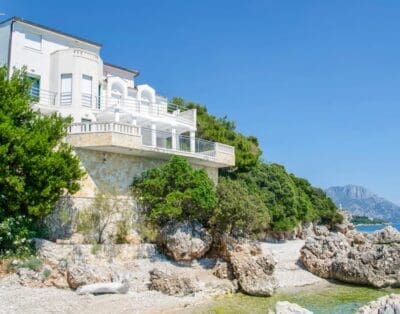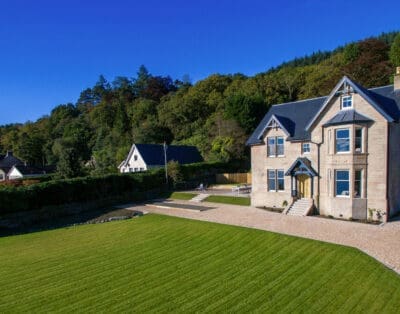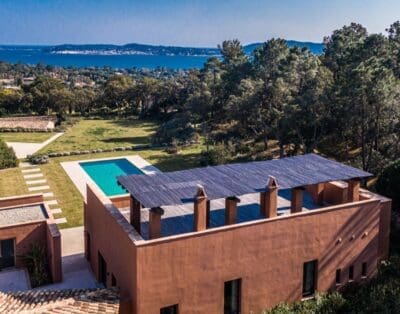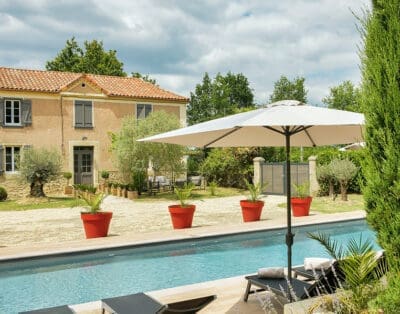Bentley Flying Spur V8 S Bluebell Vineyard Estates Hindleap Tour
What better way to tour the best English vineyards producing award winning sparkling wines than in the Bentley Flying Spur V8 S? The Flying Spur is without doubt one of the most comfortable luxury cars ever made and ideal for a luxury tour of the chalk and clay landscapes of southern England that now host some of the finest wines in the world. English sparkling wine is coming of age and selling worldwide, so IX Magazine set off on a rainy morning with the Bentley glistening from the night’s downpour, heading for the rolling hills of East Sussex to see how Bluebell vineyard made their justly famous Hindleap sparkling wine.
The approach to Bluebell vineyards is all lovely little country lanes and the ideal opportunity to enjoy the comfort and luxury of the Bentley V8 which despite its size, handles beautifully, its permanent four wheel drive and super smooth 8 speed gearbox making light work of the narrow twists and turns. It seemed particularly apt to arrive at such a lovely English vineyard in such a quintessentially English car. You’ll forgive the somewhat nationalistic sentiment, but as you appreciate from the name of the magazine (International eXcellence Magazine, in case you arrived via search), we are mercilessly free of the poorer side of nationalism where pride in a country translates to fear of others, but can still appreciate such a magnificent pairing. I would feel similar bouncing across the Champagne region in an old Citroën 2CV, though admittedly not equivalent in terms of luxury!
The owners Barry and Joyce Tay bought the land in 1982 and started the vineyard in 2005. Joyce and Collette were there to greet us and we had a lovely time admiring the Bentley with the vines in the background. The Bluebell vineyard is set across 70 acres of undulating slopes that are quite magnificent, especially in the blazing unseasonal sunshine we were having in late September. Collette proceeded to show us around and explain more about Bluebell and its history. Collette is an extremely knowledgeable and enthusiastic oenologist and she shares her passion for her work with great charm. Imparting a vast amount of knowledge in a very short time and it was a fascinating insight into the wine making process.
Keep in mind that it takes at least three years for vines to produce the right berries, so it’s a long term investment by any measure. It has paid off as Bluebell have won many awards both in the UK and abroad. They only produce vintage wines, or wines that have been on the lees for 17-60 months. The vintage denotation varies, but is generally over a year and many consider it should be around three years. Of course a vintage will also depend on the quality of the grapes of any particular year. 2016 has been a good year so Bluebell are looking forward to picking and pressing the berries as the harvest starts in the third week of October.
Bluebell was once home to a rather sizeable pig farm which meant that the soil was very fertile bizarrely meaning it is not the best for growing grapes as any viticulturist will tell you. Essentially you get better grapes if the vines struggle to survive as the plant has an interesting evolutionary tactic, it will produce more berries in hard times. So earth that has been fertilised by happy pigs over a long time needs some adjustment. Winemakers are constantly trying to find the right balance between healthy vines and struggling vines, that will produce more berries rather than leaves. Maintaining a good water balance and drainage is also essential as you want the vine to have long strong roots that will feed the berries, but not too much. It’s flavour not size that counts.
We wandered amongst the vines dotted around a small pond set in a bijou valley that is quite stunning, admiring the grapes, soon to be harvested by hand. The vines are ordered in small rows, spaced exactly the length of their shadow apart, so they do not block the light. Interspersed six rows of Pinot Meunier by six rows of Chardonnay, next to six rows of Pinot Noir. These three varieties are the ones used to make Champagne and are still highly prized in the making of English sparkling wine. Though most of the vineyards are experimenting with other varieties as well, particularly those vineyards looking to develop a unique British character to their offering.
An interesting aside, Bluebell don’t use Malolactic fermentation, a process where a second bacteria is often added to soften the wine after the first fermentation, adding a buttery flavour typically associated with Champagne. This means that the Hindleap sparkling wine is generally more fruity and floral as they aim to produce a fresher, cleaner taste.
After admiring the vines, we soon moved into the barn for the tasting. We were quite looking forward to this as we had recently spent a lovely evening at Gravetye Manor where we had very much enjoyed a bottle of Hindleap and had been very impressed. Collette started us off on the Seyval Blanc 2013, which was delightful and quite unique. It was fresh, citric, vibrant, zingy with a sherbet tang and very pleasant indeed. We then moved to the Hindleap Rosé 2013, which was more delicate, with a lovely aroma, gentler and softer than the Seyval. Next came the Blanc de Blanc 2008, a more mellow, soft Champagne taste, due to the 6 or more years on the Lees, a slight buttery yeast taste apparent, making this a very grown up English sparkling wine. Finally we opened the Winemakers Classic 2010, fizzy and vibrant like the Seyval, but with more depth, a golden colour and a longer flavour, well balanced and round.
Hindleap are intent on producing something that is not Champagne, but something exquisitely British that stands by itself, not merely a copy of another region. They are producing something they are proud of that will work best with the terroir they have and the grape varieties to match. It is working very well. The wines are excellent, different to Prosecco and Champagne, with a character all of their own. My wife preferred the Blanc de Blanc 2008, as it probably came the closest to a balanced Champagne, but I was very taken with the more robust Blanc de Blanc 2014 and the Winemakers Classic, all variations on the Seyval Blanc. A week later it is the Winemakers Classic that lingers in my memory and the bottle I would like to open now. Though I would recommend the Rosé too.
Bluebell’s Hindleap is one to watch, whilst they are experimenting to achieve the very best sparkling wine each year, which may affect consistency, they are discovering their own niche and character which I am sure will see them become hugely successful. They are a small vineyard and therefore enjoy the independence that allows them to follow their passion and to produce startlingly good sparkling wines. These wines are bursting with creative flavours, different notes soaring through the octave, grape varieties and British summers humming up and down the fret, exciting and different, like hearing rock and roll for the first time. Bluebell seem to have found a way to be the Rolling Stones of sparkling wine!
Bluebell Vineyard Estates








